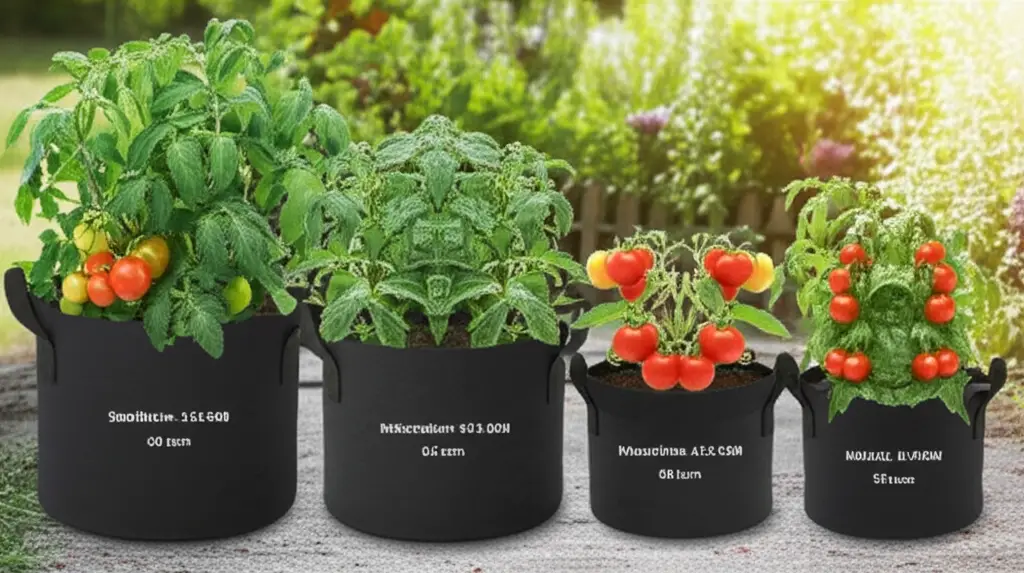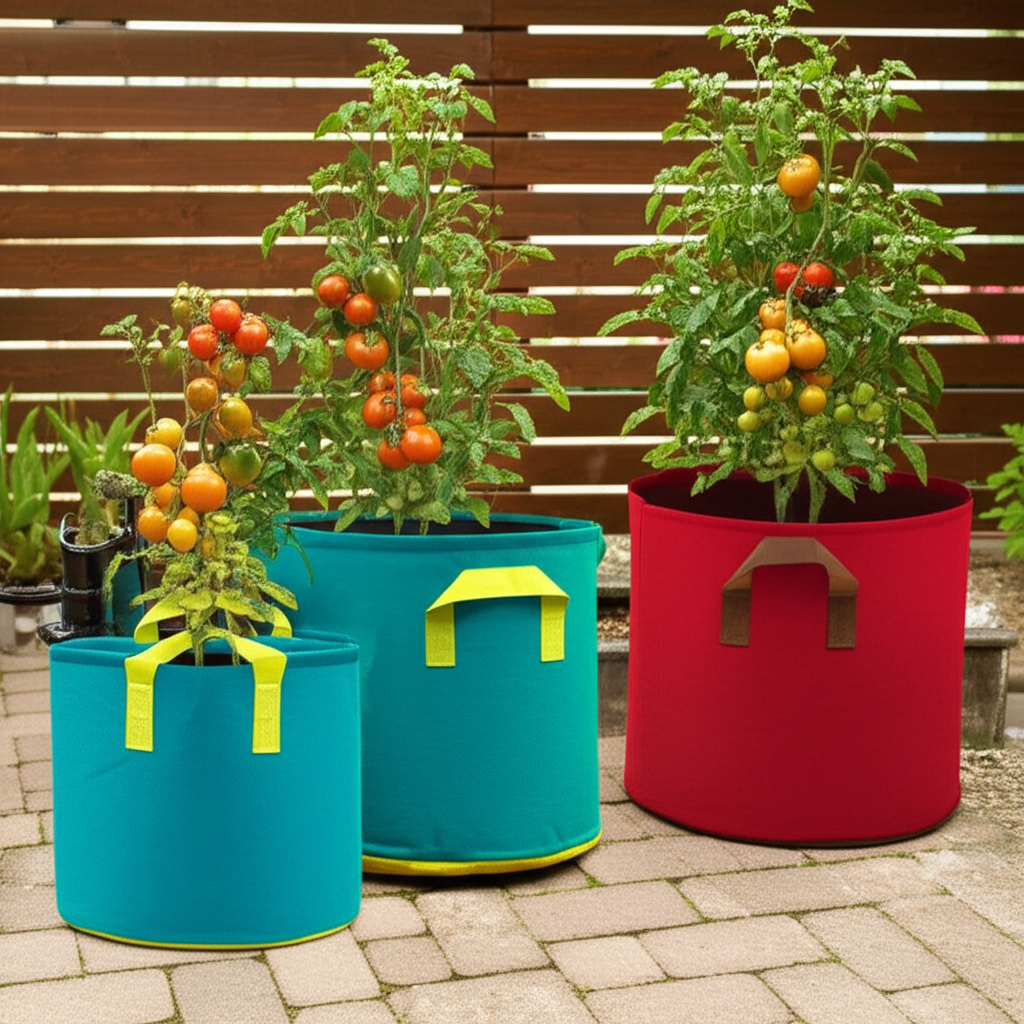Choosing the best grow bag size for tomatoes is crucial for a bountiful harvest. This guide explores ideal sizes, benefits of using grow bags, and tips for successful tomato growing.

Growing juicy, ripe tomatoes at home can be a rewarding experience, and using grow bags offers flexibility and convenience. This guide helps you determine the optimal grow bag size for healthy tomato plants and maximum yield.
Why Choose Grow Bags for Tomatoes?
Grow bags offer numerous advantages for tomato cultivation:
Excellent Drainage and Aeration: Grow bags promote healthy root development by providing superior drainage and preventing waterlogging. The porous fabric allows air to circulate freely, leading to stronger roots.
Portability: The lightweight nature of grow bags makes them incredibly portable, allowing you to easily move your tomato plants to follow the sun or protect them from harsh weather.
Space Saving: Grow bags are ideal for small spaces like balconies, patios, or even indoors. They maximize vertical space and are perfect for urban gardening.
Temperature Control: Grow bags help regulate soil temperature, preventing overheating in hot weather and protecting roots from cold snaps.
Disease Prevention: Using fresh potting mix in grow bags each season helps minimize soilborne diseases and pests that can plague tomatoes.
Best Grow Bag Size for Tomatoes: A Detailed Look
Choosing the right grow bag size directly impacts the health and productivity of your tomato plants. Different tomato varieties have varying space requirements.
Determinate Tomatoes: These compact varieties are ideal for smaller grow bags. A 5-gallon grow bag is typically sufficient for most determinate tomatoes.
Indeterminate Tomatoes: These vigorous growers require more space for their expansive root systems. A 10-gallon grow bag, or even larger (15-20 gallons), is recommended for indeterminate varieties.
Dwarf Tomatoes: For tiny patio tomatoes or dwarf varieties, smaller grow bags, like 1-3 gallons, are suitable.
Choosing the Right Grow Bag Material
While size is crucial, the material of your grow bag also plays a significant role in your tomato plants’ success.
Fabric Grow Bags: These are the most common and recommended option for tomatoes. Look for breathable fabrics like felt or polypropylene.
Plastic Grow Bags: Less ideal than fabric, plastic grow bags can retain too much moisture, potentially leading to root rot. Ensure they have adequate drainage holes.
Tips for Growing Tomatoes in Grow Bags
Here are essential tips for successful tomato cultivation in grow bags:
Use High-Quality Potting Mix: Do not use garden soil in grow bags. Opt for a well-draining potting mix specifically formulated for containers.
Watering and Fertilizing: Water your tomato plants regularly, ensuring the water drains freely from the bottom of the bag. Fertilize every 2-3 weeks with a balanced liquid fertilizer.
Staking or Caging: Most tomato varieties benefit from support. Use stakes, cages, or trellises to keep the plants upright and prevent fruit from touching the ground.
Sunlight Requirements: Tomatoes thrive in full sun, requiring at least 6-8 hours of direct sunlight per day.
* Pest and Disease Control: Regularly inspect your tomato plants for signs of pests or diseases. Take appropriate action if needed, using organic pest control methods whenever possible.
Best Grow Bag Size for Tomatoes: FAQs
Q: Can I reuse grow bags?
A: Yes, you can reuse grow bags for multiple seasons. However, it’s essential to clean them thoroughly and replace the potting mix to prevent disease buildup.
Q: What are the signs of overwatering in grow bags?
A: Yellowing leaves, wilting, and stunted growth can all indicate overwatering. Ensure proper drainage and allow the potting mix to dry slightly between waterings.
Q: Can I grow different vegetables in the same grow bag as tomatoes?
A: It’s possible to grow compatible companion plants with tomatoes in larger grow bags, such as basil, marigolds, or onions. However, avoid overcrowding the bag.
Q: How often should I fertilize tomatoes in grow bags?
A: Fertilize your tomatoes every 2-3 weeks with a balanced liquid fertilizer formulated for vegetables.
(Automation attempt of outbound internal links would occur here. For instance, a link to an article about “Companion Planting with Tomatoes” or “Choosing the Right Potting Mix”)
(Outbound links to authoritative sources would also be included here, linking to university extensions or gardening websites with information on tomato cultivation, pest control, or specific tomato varieties)
Conclusion
Choosing the best grow bag size for tomatoes depends on the variety you’re growing and the available space. While smaller grow bags might suffice for determinate or dwarf tomatoes, larger bags are essential for indeterminate varieties. Coupled with proper care and attention, using the right grow bag size can significantly improve your chances of harvesting a bumper crop of delicious homegrown tomatoes.

